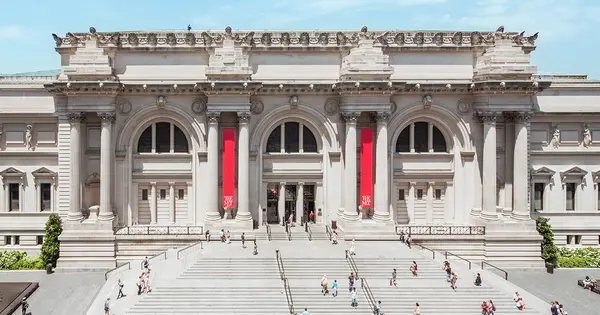

Punjab Hills, Kingdom of Jammu (Bahu), circa 1690-1710
Ink, opaque watercolor, and silver on paper
7 x 12 1/8 in. (17.8 x 30.8 cm.)
Provenance:
Kapoor Galleries Inc. , New York, by 1999, sold to MMA.
Exhibited:
New York. The Metropolitan Museum of Art. “Gods and Demons,” 2000–2001.
New York. The Metropolitan Museum of Art. “Paintings in the Punjab Hills,” 2003.
New York. Asia Society. “In the Realm of Gods and Kings: Arts of India, Selections from the Polsky Collections and The Metropolitan Museum of Art,” September 14, 2004–December 10, 2004.
New York. The Metropolitan Museum of Art. “The Ramayana,” July 6, 2005–October 9, 2005.
New York. The Metropolitan Museum of Art. “Epic India: Scenes from the Ramayana,” March 30, 2010–September 19, 2010.
San Francisco. Asian Art Museum of San Francisco. “The Rama Epic: Hero, Heroine, Ally, Foe,” October 21, 2016–January 15, 2017.
New York,. The Metropolitan Museum of Art. “Sita and Rama: The Ramayana in Indian Painting,” August 3, 2019–March 7, 2021.
Rama is shown with his brother at the summit of Mount Pavarasana passing a sleepless night after searching in vain for his wife, Sita, who has been abducted by the demon Ravana. Her fate is as yet unknown to Rama,so his fear has not yet turned to anger. The Ramayana emphasizes the vast territory they have covered and the desperate nature of their search, suggested by the featureless expanse leading to the curving horizon, marked by a silver moon.
This painting belongs to the Shangri Ramayana series, which is associated with a number of Punjab court styles, suggesting that it was the product of itinerant artists who worked for a number of patrons in the region. This folio is most closely associated with the atelier at Mandi, known for its simple but compelling compositions.
Inscription: Inscribed in devanagari on verso: 118 kiskindha (numerals in takri)